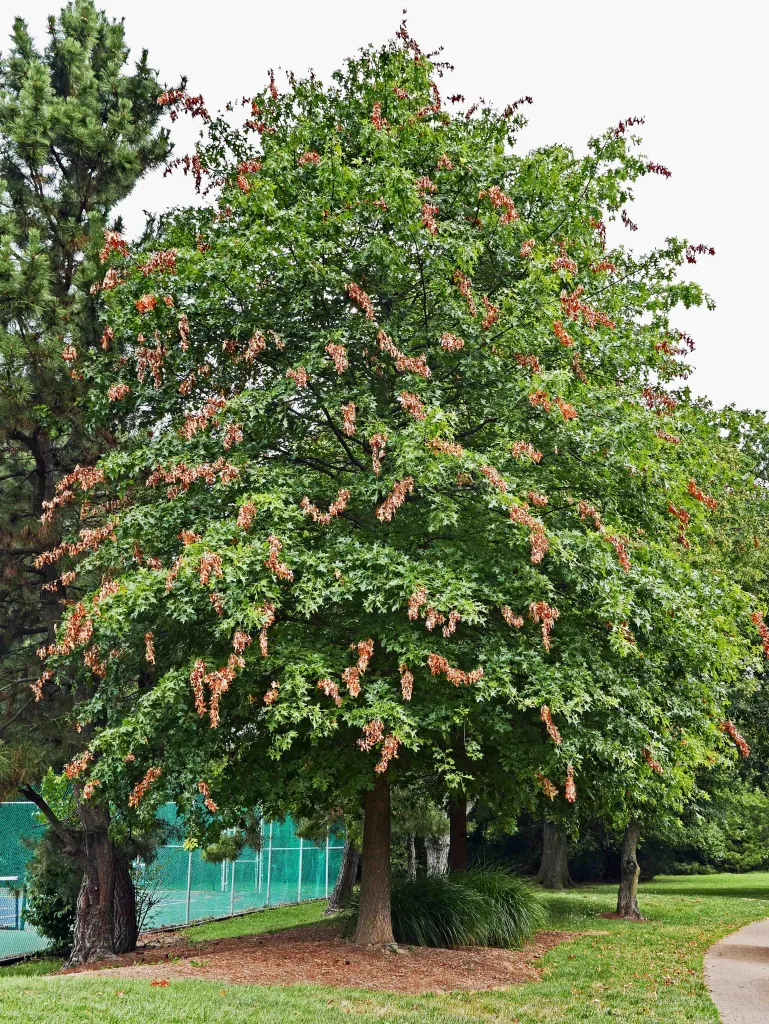Periodical Cicadas Emerge in Illinois in May : It Will Be A Buzzing Spectacle
- KATE REFINE DESIGNS

- Jan 10, 2024
- 4 min read

Cicadas, those mysterious creatures that emerge periodically with a deafening buzz, are on their way big time in 2024.
The cicadas are set to steal the spotlight in Illinois this Spring, creating a buzz quite literally. In Illinois, we will witness the emergence of not one but two distinct broods – Brood XIII, the 17-year cicadas, and Brood XIX, the 13-year cicadas. This is a very rare phenomenon, as the two broods have not emerged at the same time in 221 years. So this will be a significant year – especially for those living in Central Illinois where they will witness both broods. In northern Illinois, we will experience the 17-year cicadas, and in southern Illinois, the 13 year. The central part of the state is essentially the intersection of the two broods. Think Venn Diagram.
What follows is some brief information about these fascinating creatures and what we as gardeners can expect and prepare for in our gardens.
Life Cycle: The Underground Drama Cicadas have one of the most intriguing life cycles in the insect world. They spend the majority of their lives underground as nymphs, feeding on sap from tree roots. After several years, depending on the species, they emerge from the ground, shed their exoskeletons, and transform into adults. After mating, the females make slits in the tips of tree branches in which they deposit their eggs. (This action causes the ovipositional damage to the tips of the tree limbs.) After the eggs hatch, they become nymphs and drop to the soil not to emerge for at least 13 years!
The Buzzing Orchestra: Cicada Sounds One of the most distinctive features of cicadas is the loud and persistent buzzing sound produced by the males. This sound is not only a means of communication but also serves as a mating ritual. Different species of cicadas have unique calls, creating a symphony of buzzing that blankets the air during their active periods. We notice the sound of the annual cicadas only in the evenings. But with the brood emerging this year, be prepared to hear their 'songs' all day.
The Environmental Impact: Cicadas as Ecosystem Engineers Cicadas play a vital role in their ecosystems, not just as noisy insects but as contributors to the health of forests. Their emergence provides a feast for predators, including birds, mammals, and even some insects. Additionally, the holes created by emerging cicadas can have positive effects on soil aeration and nutrient cycling, influencing the overall health of the ecosystem.
Home gardeners: What we can expect and how to prepare for the cicada invasion.
Rejoice in the Sound and the Spectacle – It's Temporary! : First and foremost, embrace the moment. The cicada emergence will last only a few weeks, and it won't happen again for at least 13 years. Take the time to observe and appreciate the unique biology and ecology of these fascinating insects.
Delay Planting for Very Young Trees: If possible, hold off on planting very young trees with diameters less than 2” until the late summer or fall when adult cicada activity has ceased. As mentioned above, the damage to the tips of tree limbs occurs when the females deposit their eggs in the tree branches, so planting after June, will be recommended for younger trees. Planting perennials and grasses and shrubs should be fine.
Protect Vulnerable Trees with Netting: If you have younger trees in your landscape, use fine netting or tulle to cover small trees. Drape the netting over the top of the tree by the first of May, making sure to close the netting at the base of the tree. Once the cicada emergence concludes, promptly remove the netting to avoid any unintended impact on the tree.
Expect Natural Pruning: Mature and healthy trees will likely show some damage at their tips, but this will not cause significant harm to the tree. Consider it a form of 'natural pruning'.
Trees that will Be Affected: Typically only deciduous trees will be affected. Cicadas rarely lay their eggs in evergreen trees. But as we mentioned above, while mature trees in our landscape may show some tip branch damage from the egg laying, most will not suffer systemically. With younger trees, we can take precautions by netting them during the 6-8 weeks that the cicadas are active.
No need for pesticides! : The cicadas will cause little damage to healthy mature trees. Netting smaller, younger trees with less than 2" diameter will safe guard them. Remove netting once cicadas are no longer active.
Cicadas will only be with us 8 weeks: The cicadas that emerge in mid May will likey be gone around the 4th of July. As mentioned above, try to enjoy the spectacle. And if you are like me, and have an intense bug phobia, be prepared to be grossed out, especially in more established landscape areas.
If you want to read more about the Cicada invasion fof 2024, here is a link to the Illinois Extension update. https://extension.illinois.edu/insects/cicadas
We have merch to celebrate the cicada invasion. Click the link below to check out our cicada comemorative T-shirt - designed by my niece Teresa Greenwald.









Comments